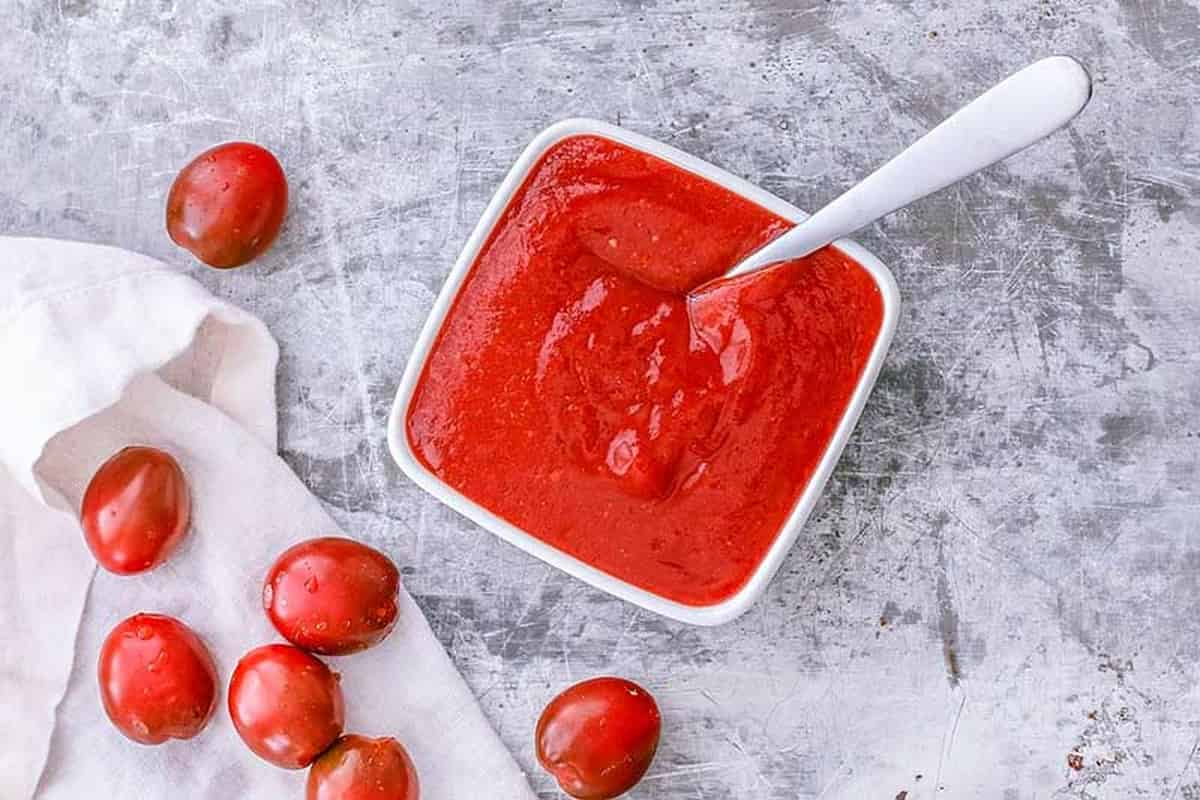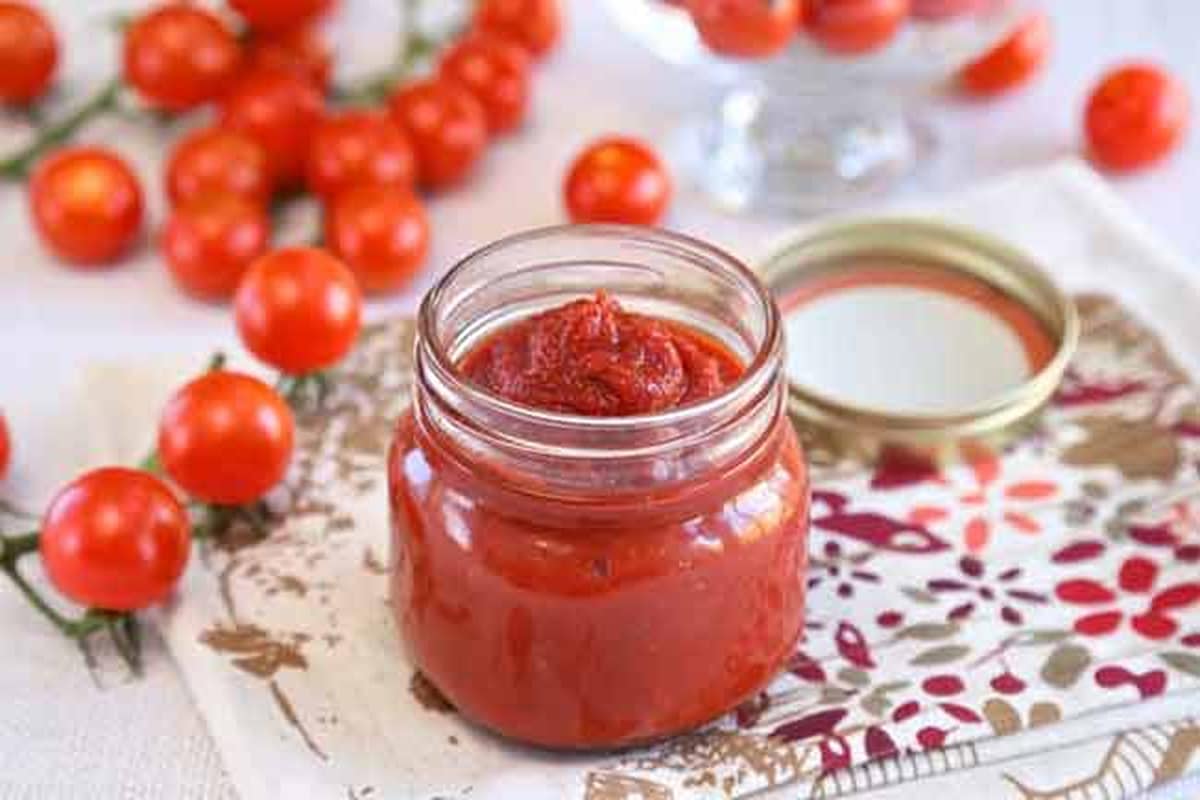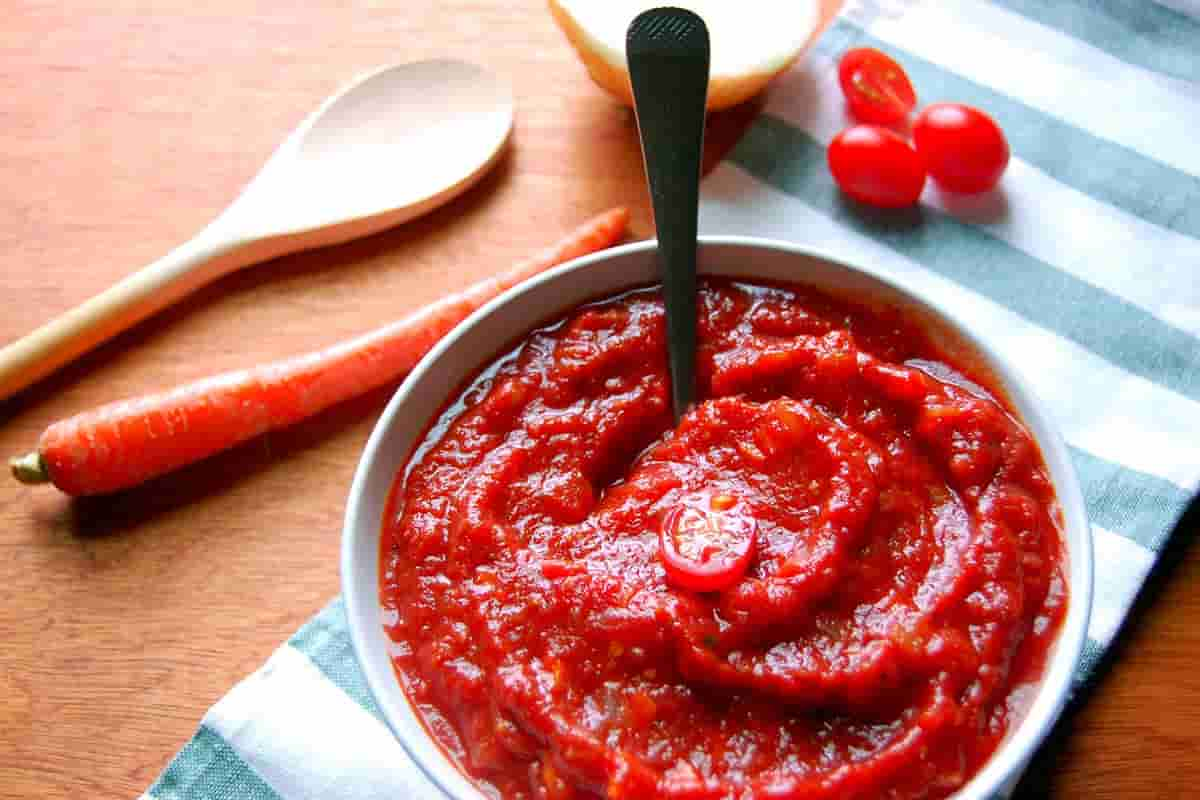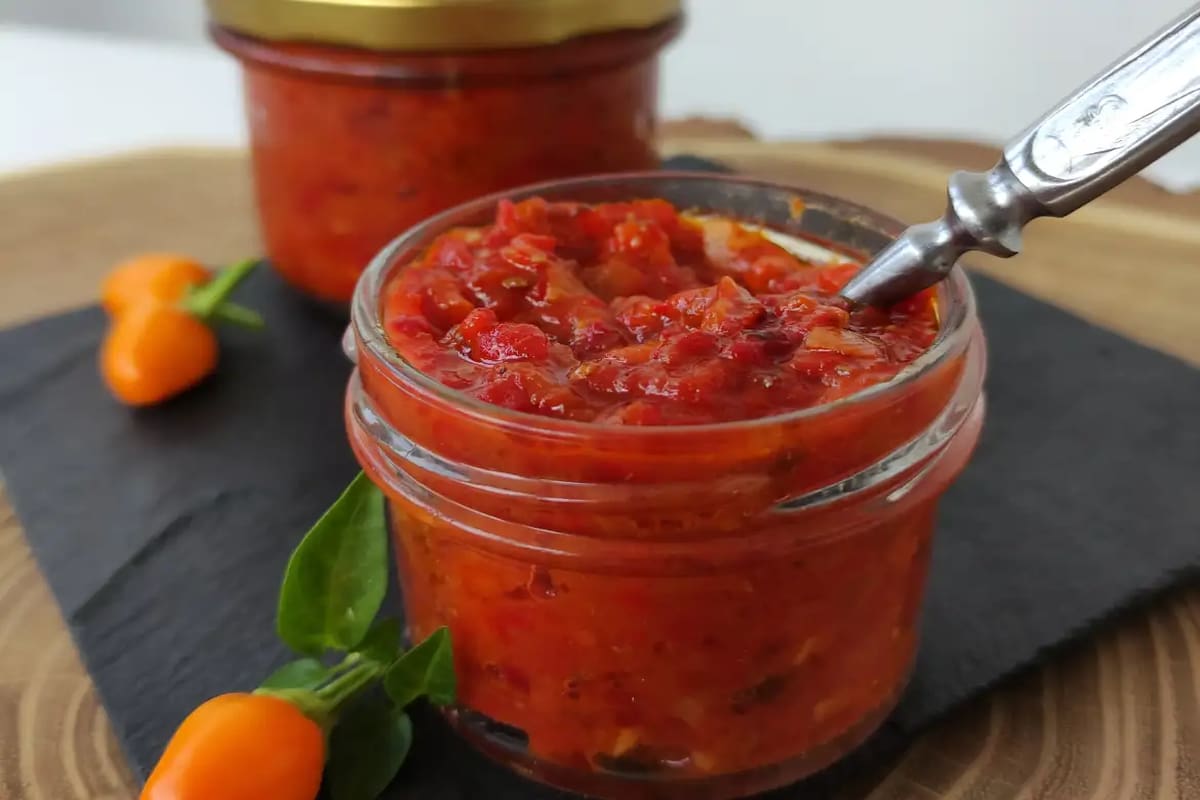If you are looking for optimal storage methods for tomato paste, then you should know the differences between tube vs can or other packaging types available in the market.
It has come to our attention that canned tomato paste and tomato paste sold in tubes both have a number of essential distinctions between them. To begin, all of the cans are preserved with citric acid rather than salt, which results in the paste having a flavor that is somewhat sour while yet being somewhat bland.
The tubes, on the other hand, are preserved with salt rather than citric acid, which results in a more seasoned flavor in the final product.
Even though all of the labels said that the paste contained in the tubes was “twice concentrated,” the paste found in the cans had a consistency and look that was somewhat more thick and darker than the paste found in the tubes, which was softer and looser.
(This simply indicates that, once the pastes have finished heating, they are transferred to evaporation tanks, where the water content is reduced while the flavor is concentrated. (This does not mean that the flavor is twice as potent as what you get in the cans.) This disparity is probably attributable to the different ways in which the pastes are produced.

Because the vast majority of food manufacturers in the United States are suited to preserve food in cans rather than tubes, tomato paste that is sold in tubes is almost always imported from Italy. In addition, the tomato paste that is produced in Italy is said to be made in a distinctive manner by Cook’s Illustrated.
Instead of the typical temperature of 200 degrees Fahrenheit in the United States, the paste is cooked to a temperature of 150 degrees there. “A greater temperature will color and caramelize the paste, and it will also deactivate enzymes that would typically break down the fruit’s firming pectin, which will result in the paste remaining thicker.
Because of the lower temperature involved in the cold-break process, the resulting paste has a texture that is more runny, a color that is more vibrant, and a flavor that is more vibrant.
So, Which one is Better?
The flavor of the tomato pastes that came in tubes was preferred by all of us over that of the tomato pastes that came in cans. Even when a manufacturer supplied a tube and a can version of the product (like Whole Foods 365), the tube had a flavor that was somewhat more vibrant and delightful. This may have occurred once more due to the fact that they used salt rather than citric acid. In addition, the flavor of some of the cans was faintly metallic.
When stored in the refrigerator, how long is the shelf life of tomato paste?
If stored in a refrigerator and properly packed with an airtight container, it has a shelf life of seven to ten days. When stored in a glass jar, it will keep for two or three days longer than when stored in an unsealed can after the can has been opened for five days.
Not only that, but it doesn’t appear to be good news, therefore I was wondering if there are any other techniques to maintain its freshness for a longer period of time. Indeed, there are still some.
To begin, you can put it in the freezer and then thaw it out before using it. In any case, considering that it can be kept for up to five or six months in the freezer using this method, it is quite an excellent technique to store it.
You also have the option of placing it in a tube, in which case it may be stored in the refrigerator for anywhere between 30 and 45 days without losing any of its quality.

After opening, the sauce needs to be stored in the refrigerator in order to keep its wonderful flavor and long shelf life. This is true regardless of whether it is stored in a glass jar or a tube.
If you want to keep something for longer than 10 days, you should choose a container that doesn’t let air in.
The amount of time that passes after you open the jar of sauce and it is exposed to air is another factor that can affect how long it will keep. Therefore, it would be to your advantage to close it as soon as you are finished with it.
How to Determine Whether or Not Tomato Paste is Still Good
Mold development is one of the most obvious symptoms that something has gone bad. Because of this, the surface will end up with certain discolorations, which you will be able to see for yourself. If the tomato paste has passed its expiration date, then the only option left is to throw it away.
An unpleasant odor is another common indicator of spoilage, serving as a warning that the item has most likely become spoiled. Mixing this with some watery component of the drug is recommended.
There is a nearly eighty percent likelihood that it will no longer have a great flavor and will have an effect on the other food you are preparing. You most certainly do not want the flavor of your excellent and expensive spaghetti to be adversely affected by this sauce.
If it appears to be in good condition and working order, but you are still unsure as to whether or not it is secure for consumption, one choice that is both straightforward and comprehensive is to taste it. If this is the case, the question of whether you should keep it or throw it away is easy to answer.

Could you put tomato paste in the freezer?
If you don’t want your delicious sauces to spoil too quickly, the answer is an unqualified yes to this question. The frozen method will make it last for a significantly longer period of time.
When the material is defrosted, there is a slight decline in quality, but other than that, everything is fine. Despite this, it works quite well for the relatively modest adjustment that most people won’t even notice.
The piece of advice that we have for you is to store the canned tomato sauce in a place that is convenient for you. They should first be placed on ice cube trays before being transferred into a freezer bag and then being placed in the freezer.
There are instances when preparing your own homemade recipe for tomato paste might result in flavors that are even more satisfying than those of store-bought varieties.
Here is a recipe that will make your mouth water just thinking about it. Tomato paste may not survive very long. However, you can save your paste for a longer period of time by freezing it.
Be on the lookout for indications that the food has gone bad, such as mold, discolorations, and an unpleasant odor or flavor. Throw out your tomato paste if any of these things are present in it.




